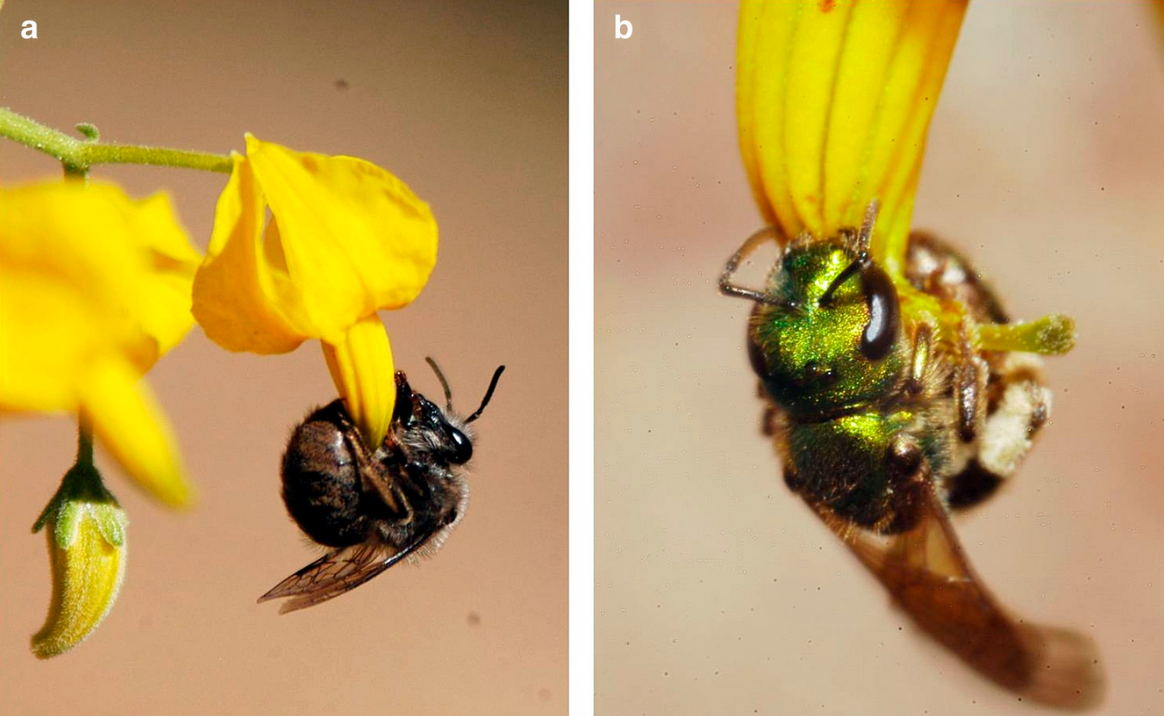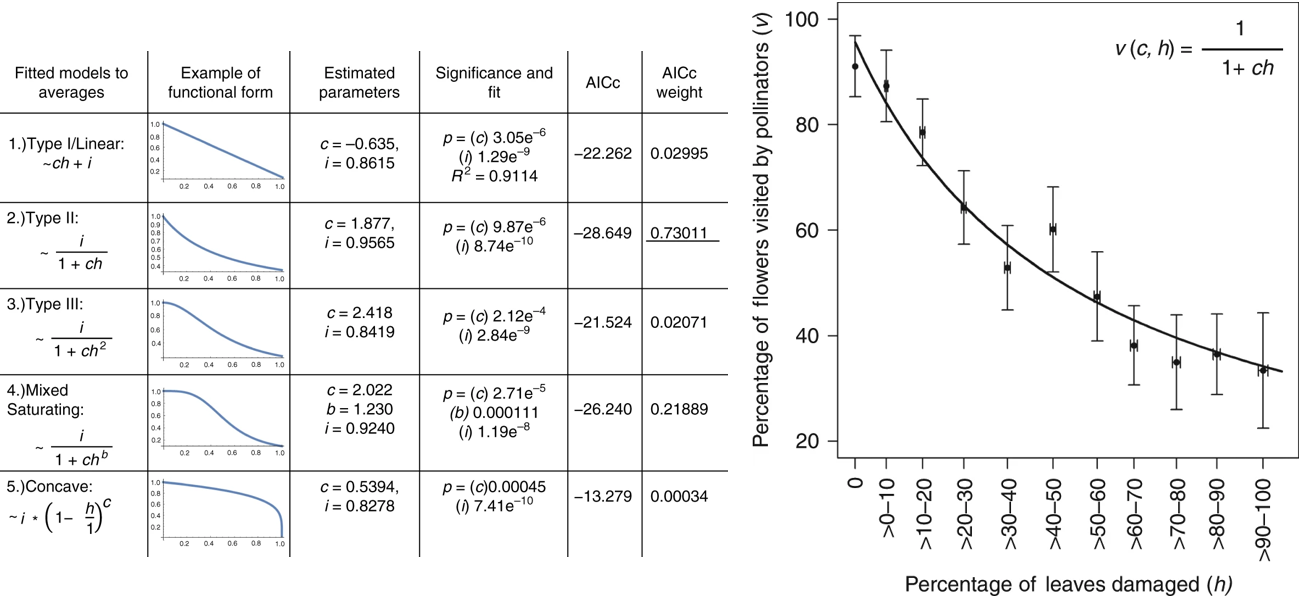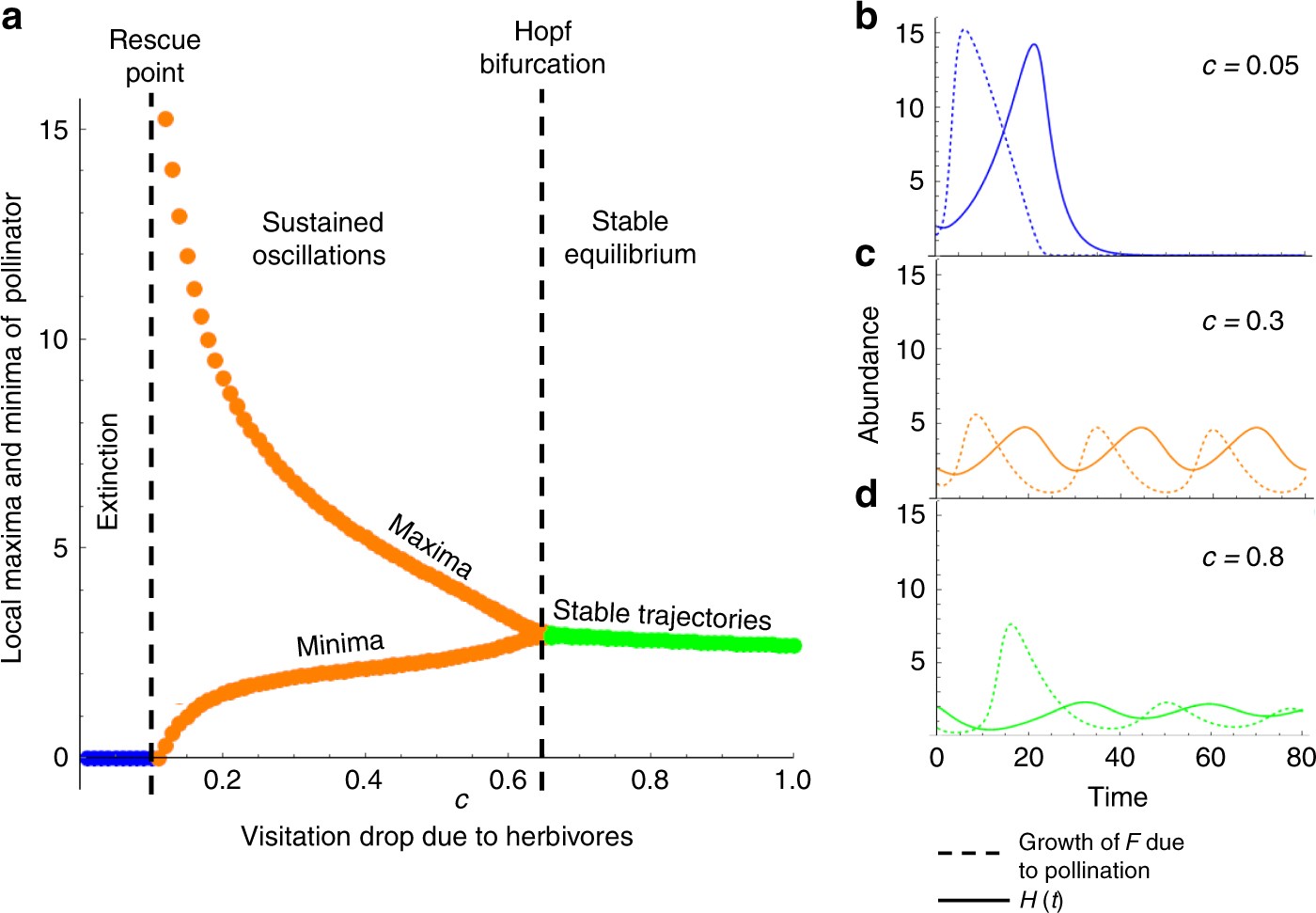Chemical Ecology

Plant interactions with insect herbivores are important because they are fundamental to broader ecological dynamics and ecosystem functioning.
Plant-insect herbivore interactions are mediated by various plant defense systems. Plant chemical defenses are induced as secondary metabolites
in response herbivore damage. These chemicals can repel insects by reducing palatability or functioning as a toxin/poison. Jasmonates are a common
chemical defense in many species of plants.
Interestingly, these chemicals defenses (including jasmonates) are volatile and can also repel pollinating insects. This herbivore-induced pollinator limitation
(HIPL) means that plant defenses can actually limit plant reproduction. So this can produce a tradeoff between not getting eaten and reproduction!
This leaves biologists with the following long lingering questions:
1) How does this reduction in pollination scale with herbivore damage?
2) How does a defense trait which lowers individual fitness sustain persist?
3) What are the broader effects of these chemical defenses in ecological communities of plants, pollinators, and insect herbivores?

In the Peruvian Andres, the wild tomato (Fig 1 Solanum peruvianum), releases Jasmonates as a defense against attacks from herbivorous insects.
These volatile defense chemicals repell insect pollinators such as the buzz pollinating bees that these plants rely on (Fig 2).
These chemical defenses have been shown to reduce individual seed set in S. peruvianum due to HIPL. Using a unique dataset collected by
my collaborators (see paper below), I was able to assertain the functional form of this reduction due to Jasmonate chemical defenses (Fig 3).

Fitting a model of HIPL to the data shows that the reduction in pollinator visits (v) as a fuction of herbivory (h) followed what ecologists call a Type II functional response (Fig 3). I then built a mathematical model of interacting herbivores (H), pollinators (P), and flowering plants (F) and integrated the newly understood Type II function representing the effects of chemical defenses on pollinator visits (HIPL).

The mathematical model informed by our empirically defined HIPL function, produced a surprising and interesting result. The herbivore induced reduction in individual plant fitness rates due to HIPL had the indirect effect of dynamically reducing herbivore population growth and density (Fig 4). This actually better supported community persistance and stability than if the plants did not use their chemical defense and reduce their fitness via HIPL (Fig 4). Our results also imply that emergent ecological dynamics of individual fitness reductions may be more complex than previously thought.
This research is published in
Nature Communications and can also
be seen on my Research Gate page.
This work was further publicized in popular media, through
My Science
and a French publication,
Science & Vie.